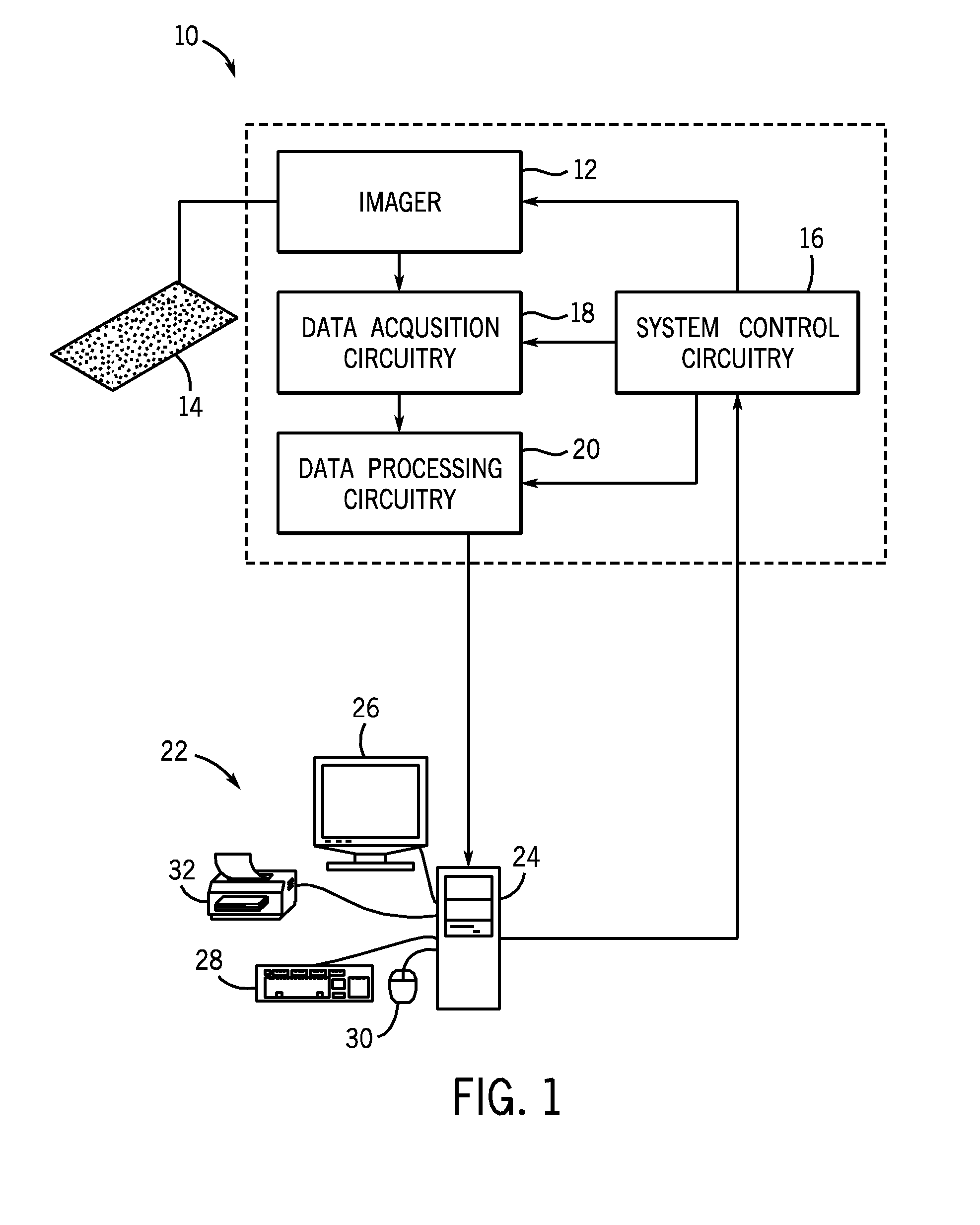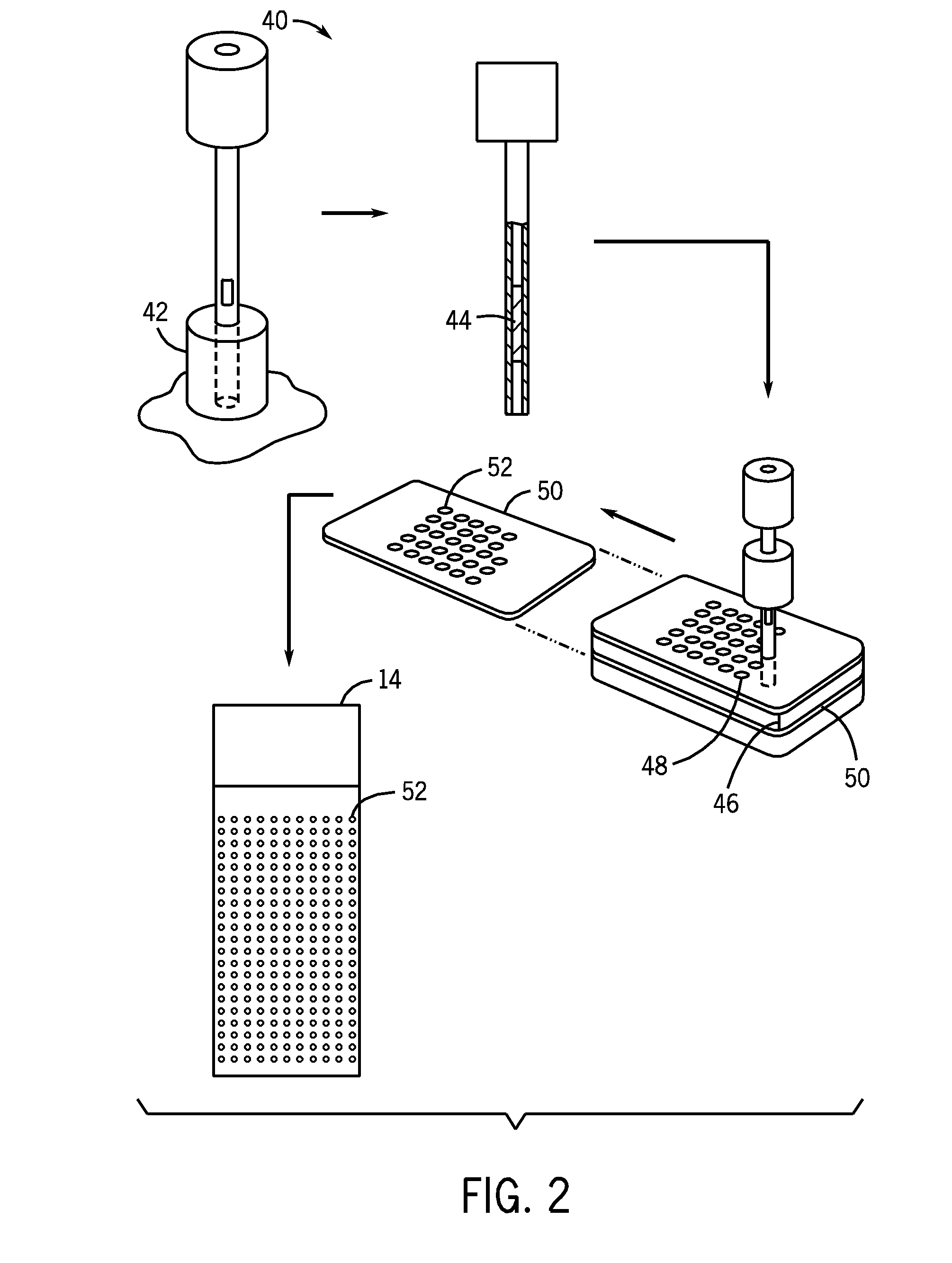Method and apparatus for analysis of tissue microarrays
a tissue microarray and analysis method technology, applied in the field of image processing and image analysis, can solve the problems of loss of correspondence between serial sections, difficult alignment of tmas made from serial sections of blocks, and inconvenient imaging system
- Summary
- Abstract
- Description
- Claims
- Application Information
AI Technical Summary
Benefits of technology
Problems solved by technology
Method used
Image
Examples
examples
[0046]The following examples illustrate embodiments of the present techniques. In one example, ten TMA slides from a recipient tissue block, originally consisting of 217 breast tissue cores from 55 patients, were analyzed. Six of the slides were conjugated with immuno-fluorescent (IF) dyes and examined under fluorescent microscopy. The remaining four slides were examined with bright field microscopy after diaminobenzidine tetrahydrochloride (DAB) staining. The whole slide scan was not available for the DAB slides and one of the IF slides. Pathologists provided a TMA-map (shown in FIG. 7D) for the block. Serial numbers were automatically assigned to the images during scanning for identification. The tissue spots on four of the IF slides were labeled with AR, ER, p53, and Her2 biomarkers respectively and cores on the remaining two were used for multiplexing with multiple biomarkers. The DAB stains were also used to test for the same four biomarkers under bright field microscopy.
[0047]...
PUM
| Property | Measurement | Unit |
|---|---|---|
| diameter | aaaaa | aaaaa |
| image processing | aaaaa | aaaaa |
| fluorescent in situ hybridization | aaaaa | aaaaa |
Abstract
Description
Claims
Application Information
 Login to View More
Login to View More - R&D
- Intellectual Property
- Life Sciences
- Materials
- Tech Scout
- Unparalleled Data Quality
- Higher Quality Content
- 60% Fewer Hallucinations
Browse by: Latest US Patents, China's latest patents, Technical Efficacy Thesaurus, Application Domain, Technology Topic, Popular Technical Reports.
© 2025 PatSnap. All rights reserved.Legal|Privacy policy|Modern Slavery Act Transparency Statement|Sitemap|About US| Contact US: help@patsnap.com



